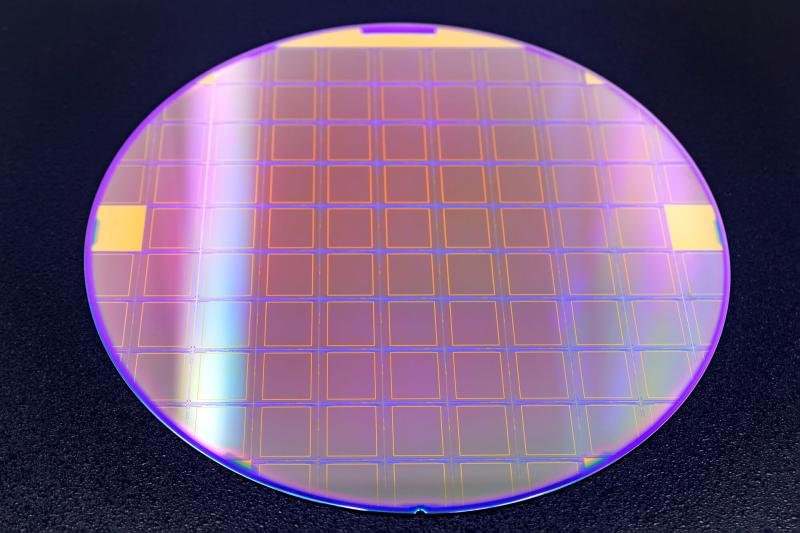Indium Phosphide (InP) is a binary semiconductor material composed of indium and phosphorus. With its ability to operate at extremely high frequencies and exhibit superior electron velocity, it plays a pivotal role in the world of electronics and communications. The Indium Phosphide market is witnessing robust growth, fueled by its use in critical applications such as fiber optic communications, wireless communication, optoelectronics, and more. This article explores the market’s size, key drivers, segmentation, regional trends, and future prospects in depth.
✅Get a Sample Copy of Research Report (Use Corporate Mail id for Quick Response): https://www.persistencemarketresearch.com/samples/33351
Indium Phosphide Market Overview
The global Indium Phosphide (InP) market is expected to reach a valuation of approximately USD 5.1 billion in 2023 and is projected to grow at a 5.6% compound annual growth rate (CAGR) over the next decade. By 2033, the market is anticipated to achieve a valuation of USD 8.8 billion, reflecting a strong demand for InP wafers and devices. Indium Phosphide is used primarily in high-speed fiber-optic communication, optoelectronics, 5G base stations, and telecommunication devices. It’s a preferred material in applications requiring high-frequency operation, such as modulators, photodetectors, and laser diodes.
Several factors contribute to the growth of the InP market. Key drivers include the expansion of the telecommunications industry, particularly the deployment of 5G networks, the increasing demand for data storage and data transmission devices, and the rising need for miniaturized electronics in industries ranging from healthcare to automotive. The leading segment driving the market is optoelectronic devices, with wireless communication applications closely following. Geographically, North America stands out as the leading region for Indium Phosphide applications, particularly in the United States, where the demand for wearable technologies, autonomous vehicles, and advanced telecommunication infrastructure is surging.
Key Highlights from the Report
➤ The global Indium Phosphide market is expected to reach USD 5.1 billion in 2023.
➤ North America is predicted to lead the market with a valuation of USD 2.10 billion in 2023.
➤ The 5.6% CAGR for the Indium Phosphide market is expected to continue until 2033.
➤ Optoelectronic devices will be the leading application segment, showcasing a 5.2% CAGR.
➤ The USA will experience an incremental opportunity of USD 1.0 billion by 2033.
➤ The China market is projected to grow at a 6.6% CAGR, driven by innovative product launches.
Market Segmentation
The Indium Phosphide market can be segmented into several key categories, such as product types, applications, and regional markets. The product types are primarily divided into industrial grade and electronics grade InP wafers. Electronics-grade wafers dominate the market due to their precision in high-frequency applications like laser diodes, modulators, and optical transceivers. These applications require materials that can withstand high frequencies and offer high electron mobility, both of which InP provides.
The market can also be divided by end-user industries, with telecommunications, automotive, and healthcare being the key consumers. In the telecommunications sector, InP is primarily used for high-speed fiber-optic communication systems and 5G base station technologies. In the automotive industry, InP is crucial for the development of terahertz sensors, which are being integrated into autonomous vehicles. Healthcare applications such as infrared thermal imaging and diagnostic tools also rely heavily on InP’s photodetector capabilities.
Key Application Segments
Wireless Communication: Includes applications in base stations, satellite communication, and cellular networks.
Optoelectronic Devices: Comprising laser diodes, photodetectors, and optical transceivers, these devices dominate the demand for InP due to their high-speed capabilities.
Data Centers: Indium Phosphide is also increasingly used in data centers for high-performance optical networking systems.
Regional Insights
North America
North America, specifically the USA, continues to be a significant region in the Indium Phosphide market, largely due to the increasing adoption of wearable technologies, smart devices, and 5G infrastructure. As urbanization rates rise and consumer demand for high-performance devices grows, the region sees a surge in demand for advanced semiconductor materials like InP. Notably, semiconductor R&D is thriving in the region, with institutions such as the University of California advancing indium phosphide-based technologies, further driving market growth.
Europe and Asia-Pacific
In Europe, the United Kingdom is a key player in the Indium Phosphide market, with companies such as Wafer Technology Limited leading the production of InP wafers for various applications, including laser diodes and photodetectors. The Asia-Pacific region, particularly China, is also witnessing a rapid expansion in the demand for InP due to its burgeoning electronics industry and increasing investments in 5G infrastructure. Japan and South Korea remain crucial players, with companies like Showa Denko Materials contributing significantly to the global supply of high-quality InP wafers.
Market Drivers
Several drivers are propelling the growth of the Indium Phosphide market. The first and most prominent is the growing demand for 5G technology, which relies on high-frequency, high-performance materials like InP. As telecom operators roll out 5G networks globally, there is an increasing demand for modulators, lasers, and photodetectors made from InP. The miniaturization of electronic devices is another major driver, as demand for smaller yet more powerful devices, such as wearable technology and smartphones, continues to rise. Additionally, the increasing need for fiber-optic communications and high-speed data transmission fuels the market for InP wafers.
Market Restraints
Despite the promising growth, the Indium Phosphide market faces several challenges. One of the most significant restraints is the high cost of production. The process of manufacturing InP wafers requires specialized equipment and cleanroom environments, which leads to high production costs. Furthermore, the supply chain for raw materials, including indium, can be volatile, which could lead to price fluctuations. Another restraint is the competition from alternative materials like gallium arsenide (GaAs), which are often used for similar high-frequency applications. These materials are more readily available and can sometimes be produced at a lower cost.
✅Request for Customization of the Research Report: https://www.persistencemarketresearch.com/request-customization/33351
Market Opportunities
The Indium Phosphide market holds several growth opportunities. One of the most notable is the increasing demand for autonomous vehicles and the need for terahertz sensors, which are essential for the LIDAR systems used in self-driving cars. The development of photovoltaic cells based on InP also presents significant opportunities in the solar energy sector, as InP-based cells offer higher efficiency than traditional silicon-based solar panels. Moreover, advancements in quantum computing and optical networking will continue to drive demand for InP, as it is an ideal material for quantum cascade lasers and optical interconnects.
Frequently Asked Questions (FAQs)
➤ How big is the Indium Phosphide market?
➤ Who are the key players in the global Indium Phosphide market?
➤ What is the projected growth rate of the Indium Phosphide market?
➤ What is the market forecast for Indium Phosphide by 2032?
➤ Which region is estimated to dominate the Indium Phosphide industry through the forecast period?
Company Insights
The following companies are major players in the Indium Phosphide market:
✦ Sumitomo Electric Industries
✦ AXT Inc.
✦ Showa Denko
✦ II-VI Incorporated
✦ Semiconductor Wafer Inc.
✦ Wafer World, Inc.
✦ IQE plc.
✦ MACOM Technology Solutions Holdings Inc.
✦ Xiamen Powerway Advanced Material Co. Ltd.
Recent Developments
■ In July 2022, Smart Photonics and Eindhoven University of Technology announced a collaboration to develop indium phosphide-based photonic technologies.
■ In June 2022, Intel unveiled the development of an eight-channel wavelength division multiplexed laser array on a silicon chip with indium phosphide properties.
Conclusion
The Indium Phosphide market is on an upward trajectory, driven by key growth drivers such as the expansion of 5G networks, miniaturization of electronics, and increasing demand for fiber-optic communications. As technology continues to evolve, Indium Phosphide’s applications will expand across industries, offering a wealth of opportunities for innovation and market growth. The market’s success will also depend on overcoming challenges related to production costs and competition from alternative materials.
Contact Us:
Persistence Market Research
G04 Golden Mile House, Clayponds Lane
Brentford, London, TW8 0GU UK
USA Phone: +1 646-878-6329
UK Phone: +44 203-837-5656
Email: sales@persistencemarketresearch.com
Web: https://www.persistencemarketresearch.com
About Persistence Market Research:
At Persistence Market Research, we specialize in creating research studies that serve as strategic tools for driving business growth. Established as a proprietary firm in 2012, we have evolved into a registered company in England and Wales in 2023 under the name Persistence Research & Consultancy Services Ltd. With a solid foundation, we have completed over 3600 custom and syndicate market research projects, and delivered more than 2700 projects for other leading market research companies’ clients.
Our approach combines traditional market research methods with modern tools to offer comprehensive research solutions. With a decade of experience, we pride ourselves on deriving actionable insights from data to help businesses stay ahead of the competition. Our client base spans multinational corporations, leading consulting firms, investment funds, and government departments. A significant portion of our sales comes from repeat clients, a testament to the value and trust we’ve built over the years.
This release was published on openPR.

















